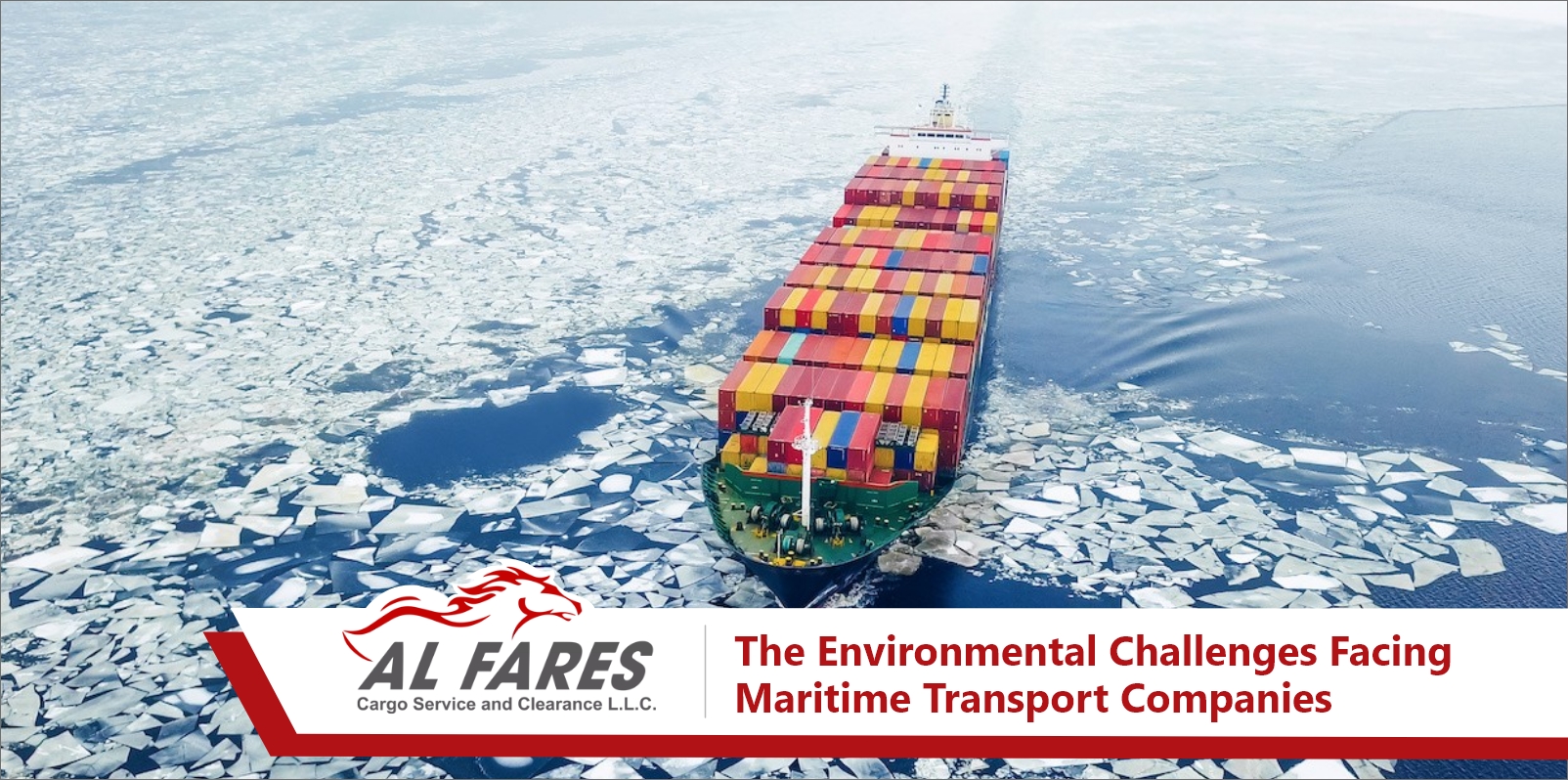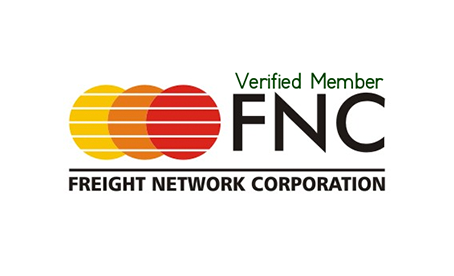In recent decades, the importance of environmental issues and climate change has significantly increased worldwide. One industry facing significant challenges in this regard is maritime transportation. Maritime companies are a focal point for these environmental challenges due to the substantial environmental impact of their activities. These companies play a crucial role in global cargo and trade transportation across the oceans, leading to multiple challenges related to marine pollution, carbon emissions, protection of biodiversity, and the impact on fragile ecosystems. In this article, we will explore the environmental challenges facing maritime transportation companies and the importance of addressing these challenges to preserve the environment and maintain sustainability for oceans and local communities that depend on them.
Environmental Challenges Facing Maritime Transportation Companies:
First: Waterway Pollution:
Waterway pollution is a serious environmental problem faced by maritime transport companies and represents a major environmental challenge. The main reasons for it are diverse and include the following:
Oil and Fuel: Ships and vessels use heavy fuel and oil as an energy source. Disposing of fuel and oil residues into the water causes pollution, affecting marine and aquatic ecosystems. Oil pollution can damage marine life, birds, and aquatic animals, impacting biodiversity in affected areas.
Harmful Chemicals: Ships use various chemicals for purposes such as cleaning and maintenance. Improper disposal of these chemicals can lead to leakage into waterways, posing toxicity risks to marine life and negatively affecting the ecosystem's health.
Waste: Ships produce large quantities of waste, including plastic, organic materials, and other refuse. Inadequate disposal of this waste into waterways contributes to water pollution, affecting marine life and the overall ecosystem.
Unregulated discharge of wastewater: The activities of ships and vessels generate various organic and chemical pollutants that are discharged into waterways in an unregulated manner. These pollutants include oil, fuel, and other chemicals used in lubrication, cleaning, and rust removal.
Leaks and accidents: Oil and chemical leaks occasionally occur as a result of maritime accidents such as collisions or sinkings. These leaks can lead to waterway contamination, impacting marine life and the entire ecosystem.
Far-reaching environmental effects: Waterway pollution can travel through currents and affect areas far from the pollution source. This can result in environmental damage to remote regions and natural reserves.
Second: Carbon Emissions:
The rise in carbon emissions is considered one of the primary environmental challenges facing maritime transportation companies. The reasons for this challenge can be attributed to the following factors:
Heavy Fuel Usage:
Most cargo ships and vessels use heavy fuel containing high levels of sulfur and heavy carbon compounds. This fuel burns incompletely, resulting in high emissions of carbon dioxide (CO2), particulate matter, and other pollutants. This contributes to increased greenhouse gas emissions, leading to global warming and climate change.
Increased Maritime Traffic:
With the growth of global trade and maritime traffic volume, fuel consumption and carbon emissions from ships increase. Economic development and globalization enhance emissions associated with maritime transportation, adding pressure to the environment.
Use of Outdated Technology:
Many maritime ships operate with outdated and inefficient technologies and engines in terms of fuel consumption and carbon emissions. Fleet renewal and replacing old ships with more environmentally friendly ones pose a challenging and time-consuming task.
Commercial and Competitive Pressures:
Maritime transportation companies may face commercial and competitive pressures that hinder their ability to take effective measures to reduce carbon emissions. For instance, companies might find it challenging to bear the costs of fleet updates or the use of less polluting fuels due to increased expenses, local regulatory constraints, or operational challenges.
Environmental Laws and Regulations:
Pressure is mounting on maritime transportation companies to comply with environmental laws and regulations related to carbon emissions. These laws may include measures such as implementing more efficient technologies like low-emission fuels, energy management systems on board ships, and assessing the environmental impact of maritime activities. Companies may need to take actions to overcome these challenges, such as improving fuel efficiency, adopting new technologies like hybrid systems, solar and wind power, and utilizing alternative fuels like liquefied natural gas.
Third: Climate Change Impact:
The impact of climate change indicates that maritime transportation companies face a challenge in dealing with rising sea levels and increased occurrences of extreme weather events.
Partially attributed to global temperature increases, rising sea levels result from the melting of glaciers and the expansion of seawater. This elevation poses a threat to coastal areas and ports, making them vulnerable to floods and severe storms. Consequently, maritime transportation operations may be disrupted, leading to delays in ship arrivals at ports, impacting the smooth flow of the global supply chain and trade.
Furthermore, the escalation of extreme weather events such as severe storms, hurricanes, and high waves poses a risk to maritime shipping vessels. These extreme weather events can cause damage and sinking of ships, affecting shipment schedules and the arrival at intended ports.
To overcome these challenges, maritime transportation companies attempt to implement policies and measures to adapt to the effects of climate change. These measures may include the use of advanced technology for weather forecasting and maritime risk prediction, taking preventive actions to protect ships and coastal facilities, and implementing flexible strategies to manage supply chains and plan for dealing with port delays.
Fourth: Adhering to Stringent Environmental Standards:
Maritime transportation companies face a significant challenge in adhering to strict environmental standards imposed by international organizations and local legislative bodies. These standards aim to reduce the negative environmental impacts of maritime transportation activities and promote environmental sustainability in this sector.
One of the main challenges is the high cost associated with achieving compliance with stringent environmental standards. These standards may require substantial investments in updating the ship fleet and modifying diesel engines to reduce gas emissions. This entails additional costs for purchasing new technologies, developing infrastructure, and training employees to implement environmentally friendly practices.
In addition to the cost, companies face challenges in changing organizational culture and adapting to new practices. There might be resistance from some employees or business partners to adopting new practices that require a change in work behaviors and operations. This may require providing continuous training and awareness to employees and encouraging their active participation in environmental sustainability initiatives.
Furthermore, companies face challenges in monitoring and auditing compliance with environmental standards. Companies in maritime transportation must implement strict control measures to ensure full compliance with standards and submit regular reports. This can be a technical and administrative challenge, as maritime transportation companies must avoid any violations that could lead to legal consequences or negative reputational impacts.
Strategies for Maritime Transportation Companies to Overcome Environmental Challenges:
There are several strategies that maritime transportation companies can adopt to address environmental challenges and enhance their environmental performance. Here are some key approaches:
Fleet Modernization:
Maritime transportation companies can improve their environmental performance by modernizing their ship fleets. Replacing old, fuel-inefficient ships with new ones that employ clean maritime transport technologies, such as electric-powered vessels or liquefied natural gas (LNG) ships, can contribute to reducing gas emissions and enhancing fuel efficiency.
Use of Alternative Fuels and Renewable Energy Technologies:
Companies can explore and adopt alternative fuels for ships instead of traditional fossil fuels. Sustainable biofuels, hydrogen, or electric batteries are examples. Additionally, developing renewable energy technologies such as solar and wind power to supply electricity to ships can be considered.
Enhancing Fuel Efficiency:
Improving fuel consumption efficiency can be achieved by implementing best practices in ship design and fleet management. This involves optimizing airflow, reducing friction, enhancing ship hull designs to minimize water resistance, and employing speed control techniques and optimal engine operation.
Waste Management and Marine Pollution Control:
Companies must implement effective measures to manage marine waste and minimize pollution. Proper disposal of marine waste according to stringent environmental standards is crucial. Technologies for pollution reduction, such as sewage treatment systems and monitoring harmful gas emissions, should also be applied.
Awareness and Training:
Promoting awareness and providing training to employees on the importance of environmental preservation and adopting sustainable maritime practices is essential. Training programs and workshops can educate teams on environmentally friendly shipping strategies and practices.
Collaboration and Partnerships:
Maritime transportation companies can collaborate with relevant stakeholders, including environmental organizations, governments, and research institutions, to exchange knowledge and experiences. Cooperation in innovation and the development of environmental technologies is crucial.
Compliance with Environmental Legislation:
Companies should comply with environmental legislation and regulations in the countries where they operate. This includes adhering to emissions control requirements, waste management, and marine life protection regulations.
It is crucial for maritime transportation companies to have a comprehensive strategic vision for sustainable development and environmental preservation. These measures should be integrated and sustainable in the long term to achieve the desired environmental impact.


 Track Your Shipment
Track Your Shipment
 Online Enquiry
Online Enquiry
 Sign In
Sign In
 English
English

 Alfares Cargo
Alfares Cargo
 Logistic Informations
Logistic Informations
 2023-11-22
2023-11-22












